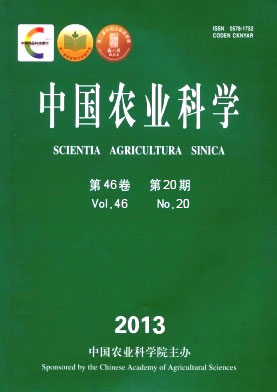-
Relationship Between Wheat Quality and Physicochemical Properties of Extruded Expansion Product
- CHEN Feng-Liang, CHEN Xiang-Yan, WANG Xian-Chang, YIN Jing, ZHAO Xiao-Yan
-
Scientia Agricultura Sinica. 2013, 46(20):
4336-4343.
doi:10.3864/j.issn.0578-1752.2013.20.017
-
 Abstract
(
530 )
Abstract
(
530 )
 PDF (591KB)
(
1102
)
PDF (591KB)
(
1102
)
 Save
Save
-
References |
Related Articles |
Metrics
【Objective】The relationship between the wheat quality of different varieties and physicochemical properties of corresponding extruded expansion product were investigated to explore which quality properties of wheat is suitable for producing extruded expansion food. 【Method】Wheat expansion products were extruded using lab-scale twin screw extruder from 16 varieties under unified process parameters condition, the quality properties of wheat, the physicochemical properties of expansion extrudate and the relationship between both were analyzed. 【Result】 There were obvious differences in quality properties of wheat and physicochemical properties of corresponding extruded expansion products. There were significant negative relationships between color difference and thousand-kernel weight, flour whiteness, weaken extent, water absorption index and kernel protein content, sedimentation value, wet gluten content, forming time, water solubility index and kernel protein content, wet gluten content, gluten index, stretching length, degree of gelatinization and kernel protein content, sedimentation value, wet gluten content. There were significant positive relationships between color difference and kernel hardness, falling number, water absorption index and volume weight, water solubility index and gluten index, tensile resistance at 5cm, product hardness and kernel hardness, flour whiteness. In the selected 16 wheat varieties, Tainong 18, Jimai 22, Qingfeng 1, Qingnong 2, Yannong 23 and Lumai 21 were more suitable for making extrusion expansion products.【Conclusion】The thousand kernel weight, volume weight, kernel hardness, flour whiteness, kernel protein content, sedimentation value, wet gluten content, gluten index, falling value, forming time, weaken extent, stretching length and tensile resistance at 5 cm all have significant effects on physicochemical properties of extruded expansion product. The wheat varieties or raw materials, with high value in thousand kernel weight, volume weight, gluten index, weaken extent and tensile resistance at 5 cm, low value in kernel hardness, flour whiteness, kernel protein content, sedimentation value, wet gluten content, falling value, forming time and stretching length, were more suitable for producing expansion products.









